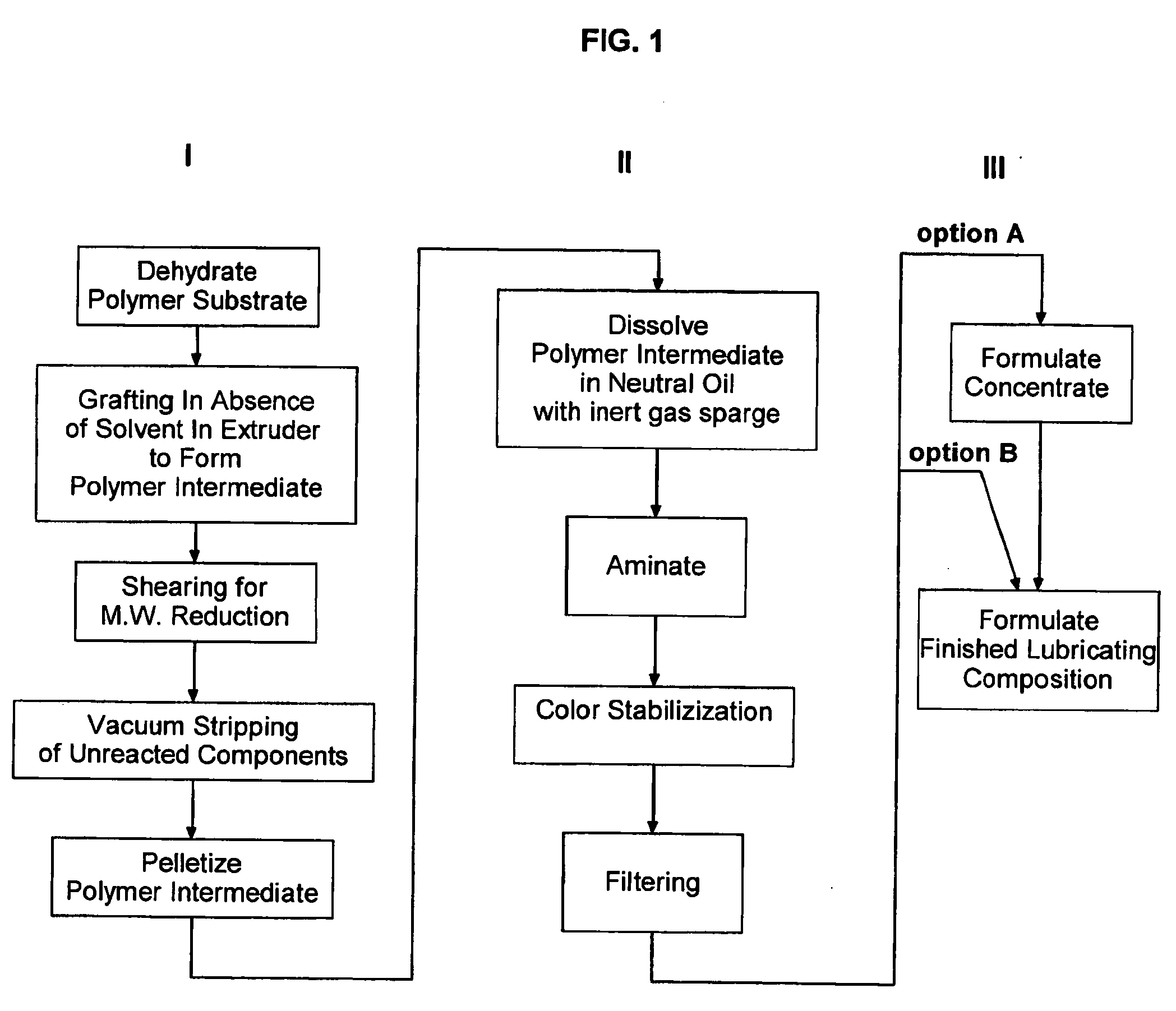Grafted multi-functional olefin copolymer VI modifiers and uses thereof
a multi-functional, olefin technology, applied in the direction of lubricant composition, liquid carbonaceous fuels, fuels, etc., can solve the problems of reducing the useful activity level of products, affecting the useful activity of products, and certain solvents, such as alkanes (, hexane) in particular, to achieve high functionalization, high purity, and high activity
- Summary
- Abstract
- Description
- Claims
- Application Information
AI Technical Summary
Benefits of technology
Problems solved by technology
Method used
Image
Examples
example i
Preparation of Highly Grafted (DOG=1.9), Multi-Functional Viscosity Modifier: Copolymer Intermediate
[0132] A pelletized acylated olefin copolymer was initially prepared in the following manner. An ethylene-propylene copolymer (EPM) with an ethylene content of 59 mol % (49 wt %) and a molecular weight number (Mn between 150,000 and 200,000) was fed into a multi-zone co-rotating twin screw extruder. The olefin copolymer was dehydrated initially in a first zone of the extruder at a temperature of about 200 to 400° C., residence time less than 5 minutes. An acylated ethylene-propylene copolymer was prepared by free radically grafting maleic anhydride, in the absence of solvent, onto an ethylene-propylene copolymer backbone in the extruder by introducing maleic anhydride and a peroxide free-radical initiator in amounts, and at a suitable temperature and time period to provide an acylated ethylene-propylene copolymer having a DOG of 1.9. The acylated ethylene-propylene copolymer had a nu...
PUM
| Property | Measurement | Unit |
|---|---|---|
| Temperature | aaaaa | aaaaa |
| Fraction | aaaaa | aaaaa |
| Fraction | aaaaa | aaaaa |
Abstract
Description
Claims
Application Information
 Login to View More
Login to View More - R&D
- Intellectual Property
- Life Sciences
- Materials
- Tech Scout
- Unparalleled Data Quality
- Higher Quality Content
- 60% Fewer Hallucinations
Browse by: Latest US Patents, China's latest patents, Technical Efficacy Thesaurus, Application Domain, Technology Topic, Popular Technical Reports.
© 2025 PatSnap. All rights reserved.Legal|Privacy policy|Modern Slavery Act Transparency Statement|Sitemap|About US| Contact US: help@patsnap.com



